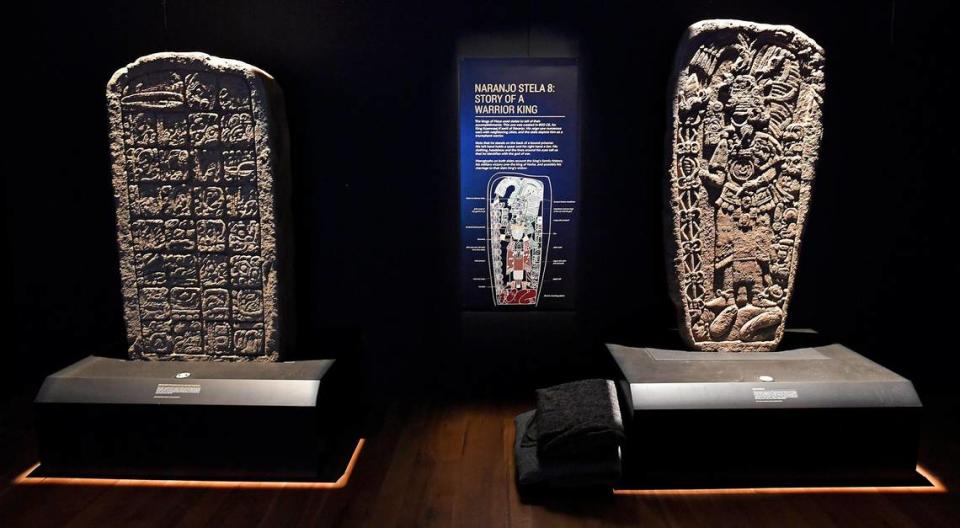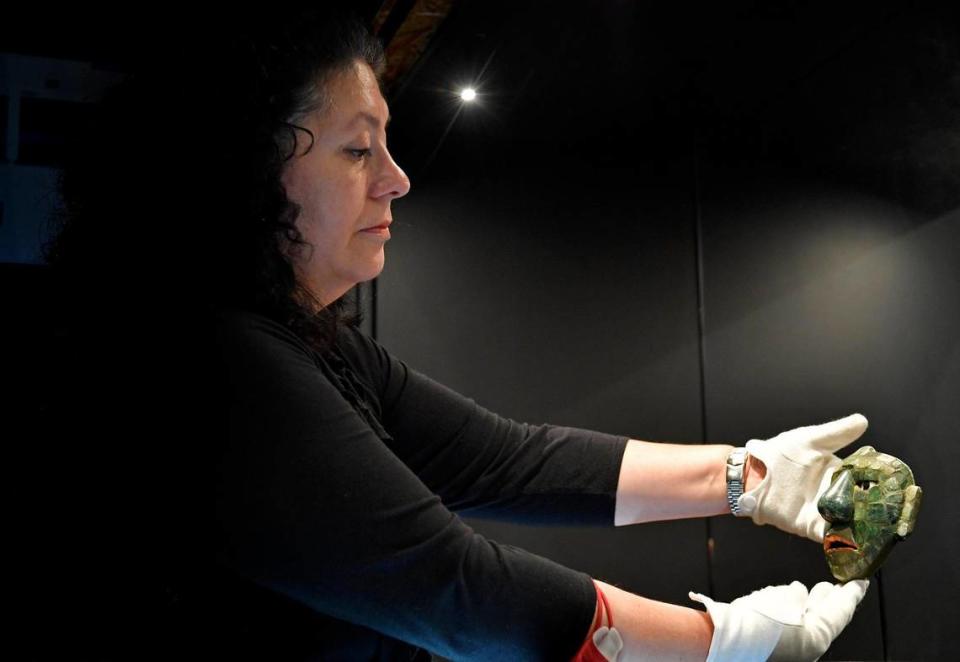New Union Station exhibit celebrating Mayan culture opens this week. Here’s what’s inside
After a three-month delay, the new exhibit “Maya: The Great Jaguar Rises” opens at Union Station on Friday. You’ll be able to see over 300 priceless artifacts, many of which are on display in the United States for the first time.
Visitors will be able to explore Mayan culture in immersive exhibit spaces. From the way their calendar worked to their intricate architecture, you’ll learn how the Maya still influence the world today.
The Mayan people lived in an area of Central America that spans present-day Belize, El Salvador, Guatemala, Honduras and Mexico. Mayan civilization dates back as far as 3400 B.C. and really thrived from 200-900 A.D.

Following the Auschwitz exhibit, George Guastello, president and CEO of Union Station, said he was excited to bring in an exhibit that’s so full of life. He said he hopes that celebrating the history and legacy of the Maya also honors Kansas City’s Latin American community.
“I’m hoping that Hispanic children and families will see this and go, ‘That’s part of me, this makes me proud and this is the story I want to tell,’” Guastello said.
WHY WAS THE EXHIBIT DELAYED?
The exhibit was supposed to open on May 13, but now will open Aug. 19. Guastello said the delay was due to changes within Guatemala’s government—where the artifacts for the exhibit came from—that required the artifacts to be re-documented before they could travel.
The historic artifacts are owned by La Ruta Maya Foundation, which focuses on returning invaluable historic art and artifacts to the places the objects came from, and then sharing them in temporary settings to educate people in other places. This exhibit is the first time these artifacts will be displayed in the United States.
Sofia Paredes, the executive director of La Ruta Maya and the curator for the exhibit, said it fulfilled a dream of hers to bring these items and share the history behind each one.
“I always wanted to be an archaeologist, but then I realized it meant nothing to be excavating an object if there is no information that can reach the people,” Paredes said.

Guastello said that Union Station worked with La Ruta Maya to ensure that each piece brought over from Guatemala was documented, secured, handled with care and delivered safely to Kansas City.
WHAT CAN I SEE?
Many of the artifacts on display range from 250 B.C. to the 20th century and detail the daily life, religion, politics and innovations of the Maya.

Here are a few examples of what you’ll be able to see at the exhibit:
A polychrome stucco figure of a Jaguar warrior. This is the only well-preserved three-dimensional stucco sculpture discovered to date. Paredes compared this piece to traveling with Michelangelo’s “Pieta.”
Hieroglyphic text panel of 160 glyphs. These were originally part of a wall carved in limestone.
Masks made of jade and related green stones, conch shell, obsidian and spiny oysters. These masks were placed at the head of the deceased and also used for belt ornaments or headdresses.
An incense burner in the form of a goddess. Incense burning was a central element in Mayan rituals.

WHEN IS IT OPENING?
The exhibit opens on Friday Aug. 19 at 10 a.m. and will be at Union Station for the rest of 2022.
HOW CAN I GET TICKETS?
You can purchase your tickets to the exhibit online at unionstation.org or in person. The exhibit will be open from 10 a.m. to 5 p.m. every day, and you’ll be able to buy tickets for the day until 4 p.m.
Adult tickets: $19.50
Child tickets: $14 for kids ages 3-12
Family pass for four: $65
Member pass for four: $55
EBT cardholders: $4.50 for four tickets

 Yahoo Movies
Yahoo Movies 
